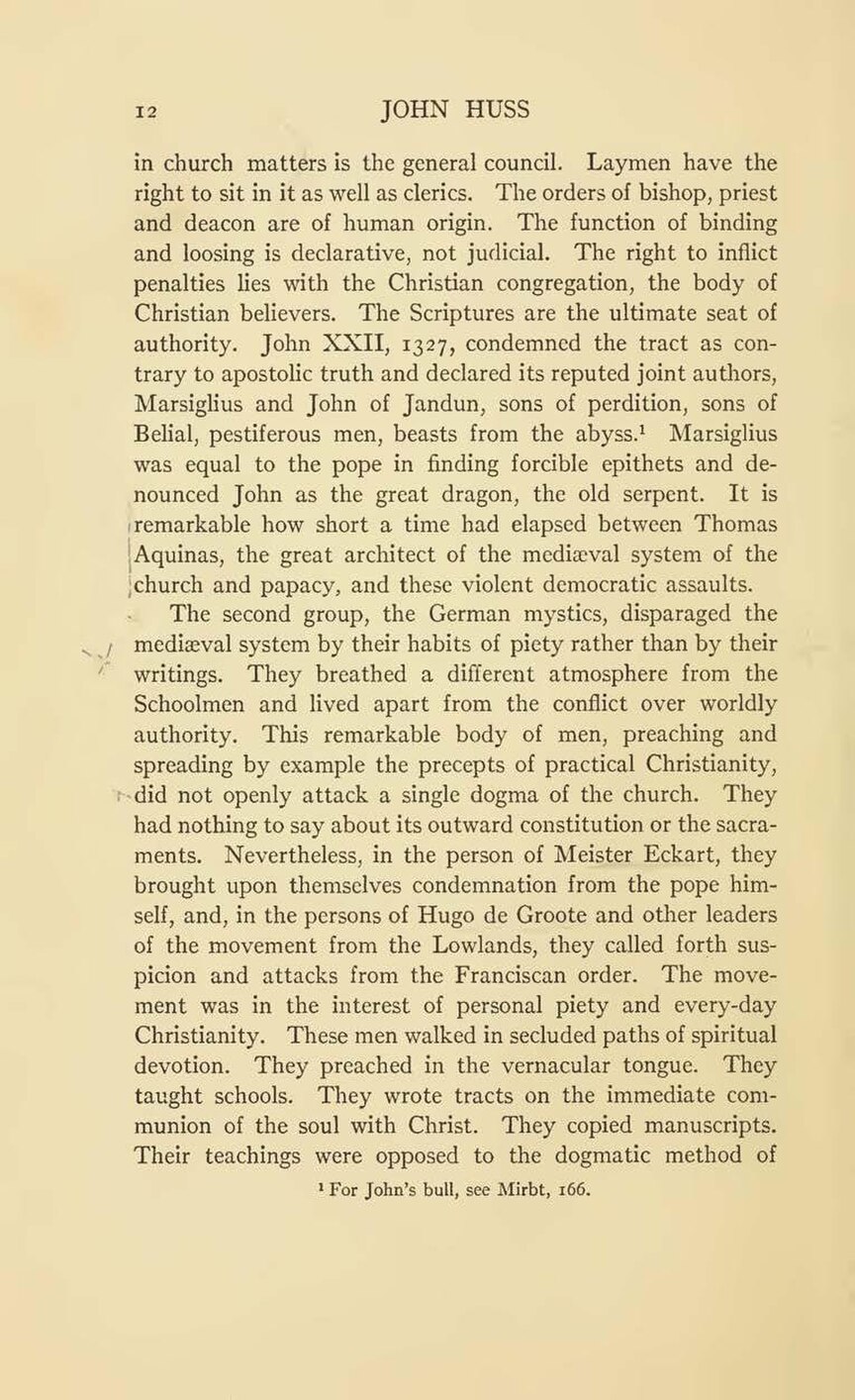in church matters is the general council. Laymen have the right to sit in it as well as clerics. The orders of bishop, priest and deacon are of human origin. The function of binding and loosing is declarative, not judicial. The right to inflict penalties lies with the Christian congregation, the body of Christian believers. The Scriptures are the ultimate seat of authority. John XXII, 1327, condemned the tract as contrary to apostolic truth and declared its reputed joint authors, Marsiglius and John of Jandun, sons of perdition, sons of Belial, pestiferous men, beasts from the abyss.[1] Marsiglius was equal to the pope in finding forcible epithets and denounced John as the great dragon, the old serpent. It is remarkable how short a time had elapsed between Thomas Aquinas, the great architect of the mediæval system of the church and papacy, and these violent democratic assaults.
The second group, the German mystics, disparaged the mediæval system by their habits of picty rather than by their writings. They breathed a different atmosphere from the Schoolmen and lived apart from the conflict over worldly authority. This remarkable body of men, preaching and spreading by example the precepts of practical Christianity, did not openly attack a single dogma of the church. They had nothing to say about its outward constitution or the sacraments. Nevertheless, in the person of Meister Eckart, they brought upon themselves condemnation from the pope himself, and, in the persons of Hugo de Groote and other leaders of the movement from the Lowlands, they called forth suspicion and attacks from the Franciscan order. The movement was in the interest of personal piety and every-day Christianity. These men walked in secluded paths of spiritual devotion. They preached in the vernacular tongue. They taught schools. They wrote tracts on the immediate communion of the soul with Christ. They copied manuscripts. Their teachings were opposed to the dogmatic method of
- ↑ For John’s bull, see Mirbt, 166.
